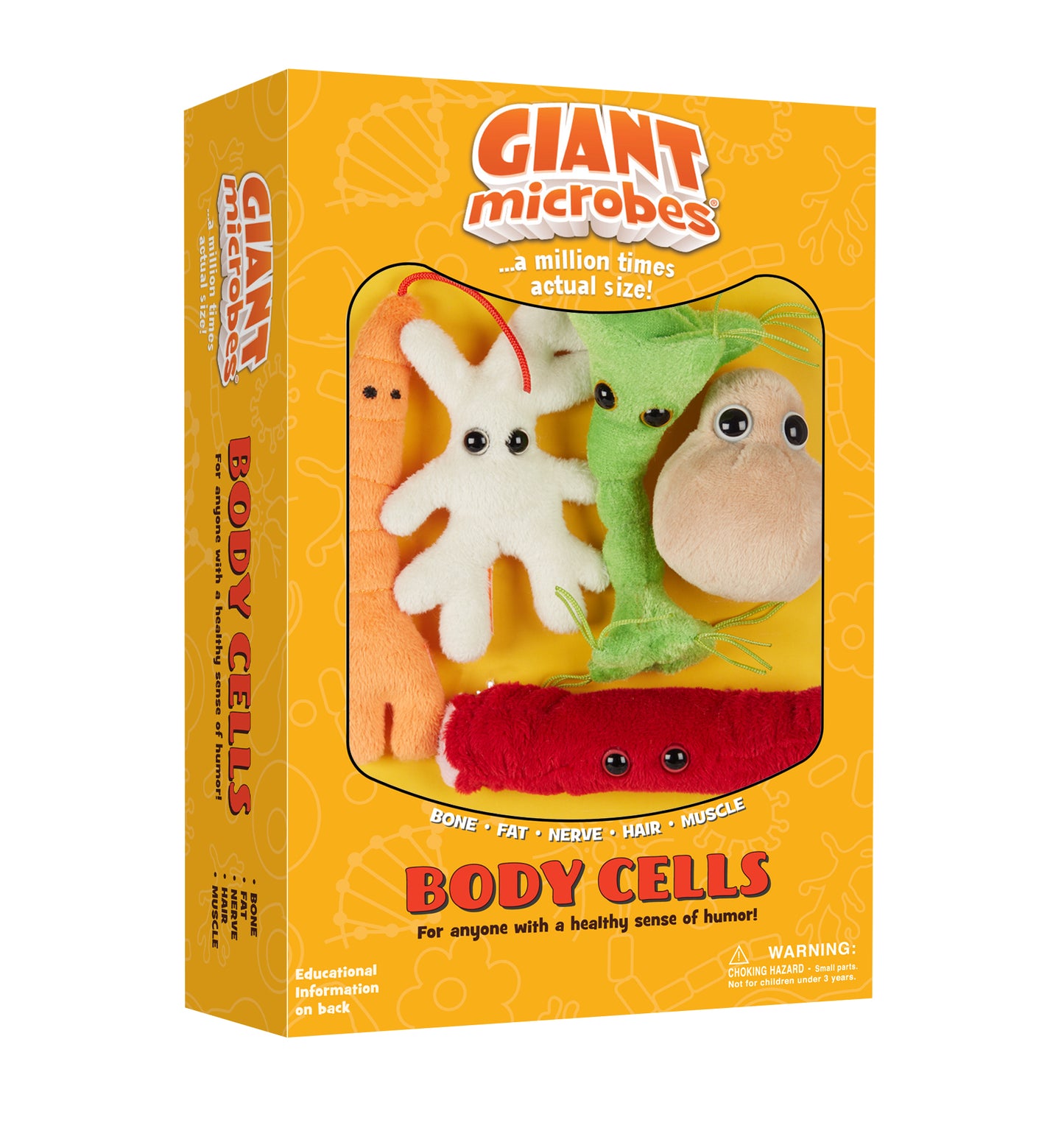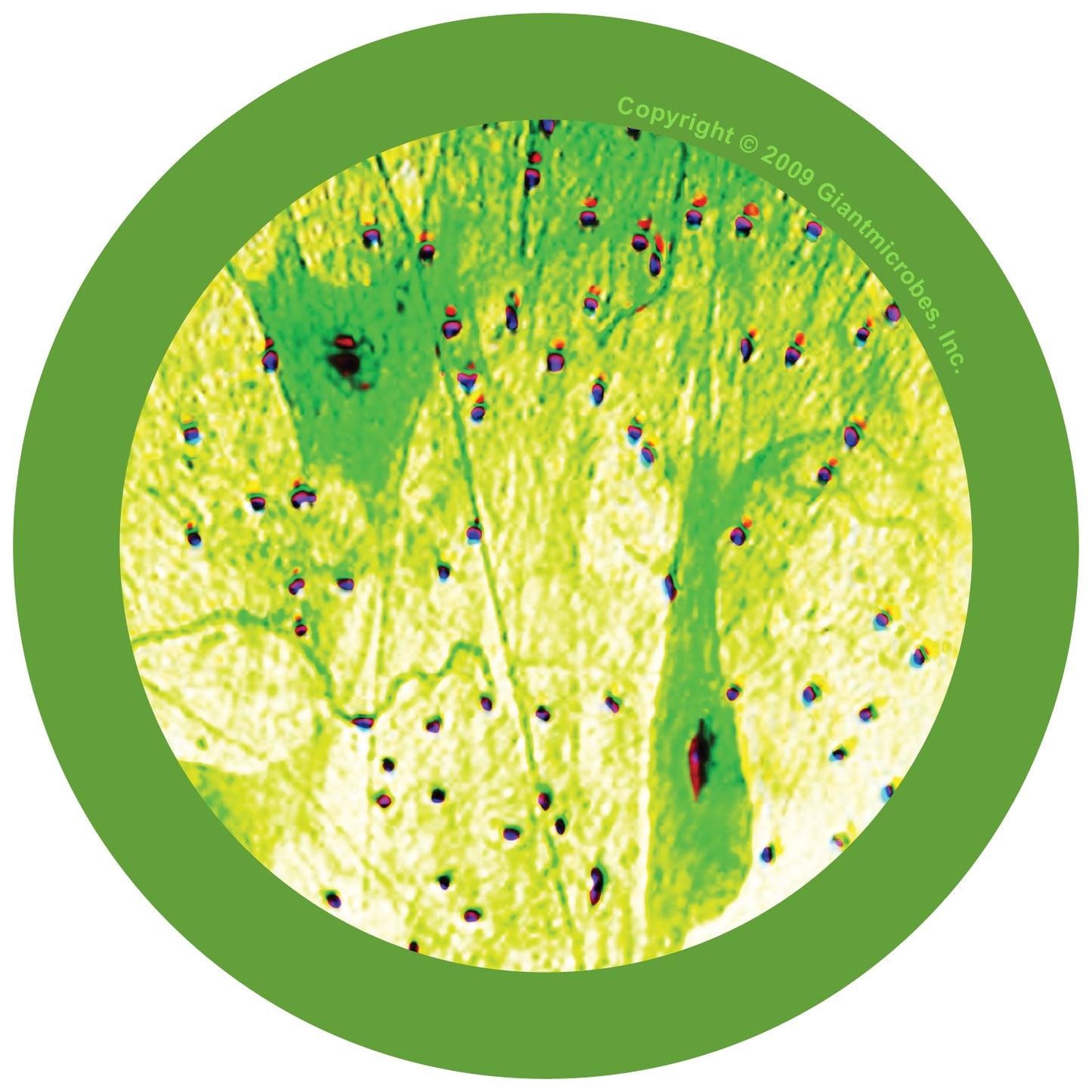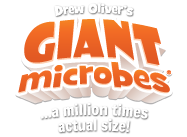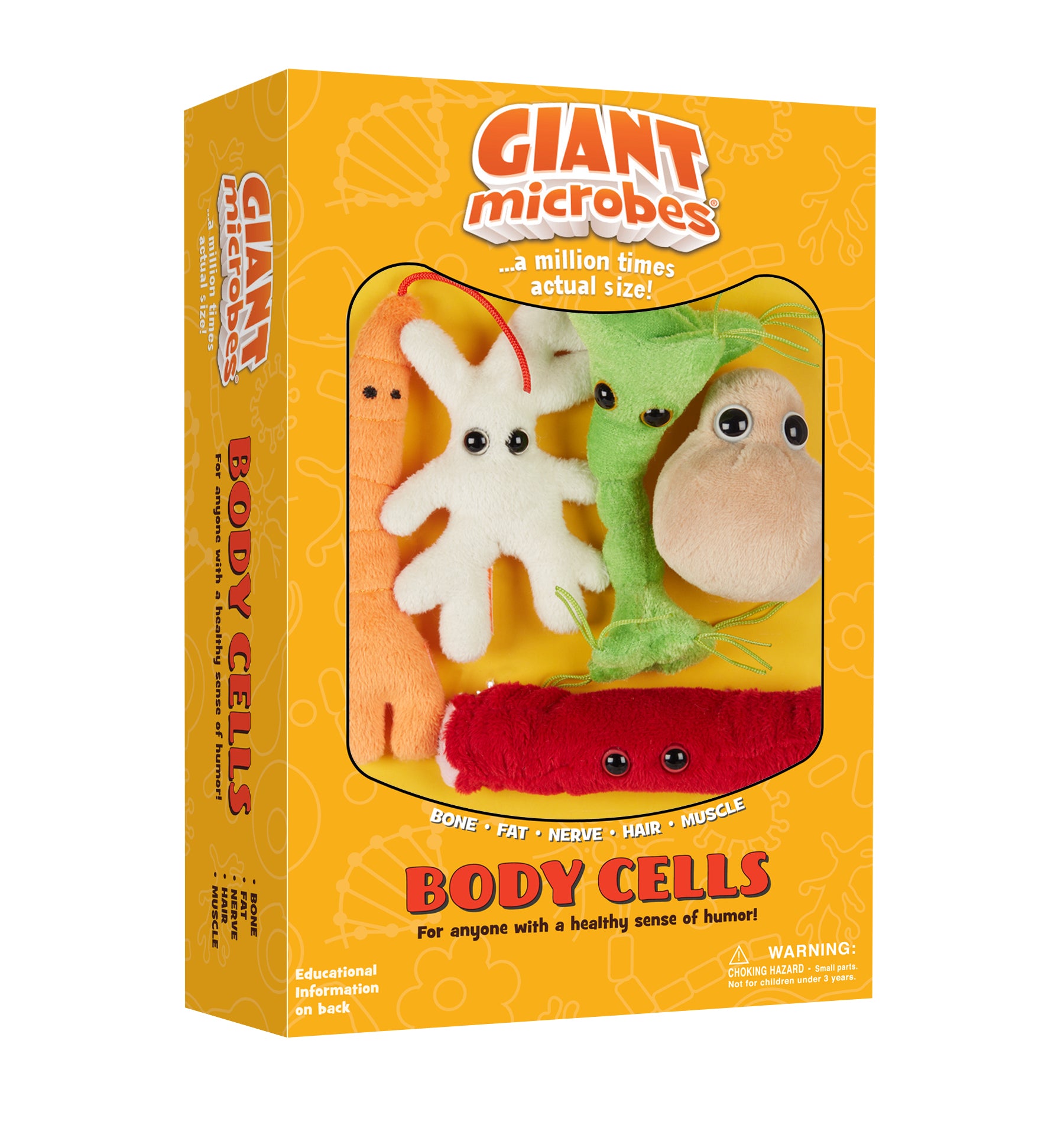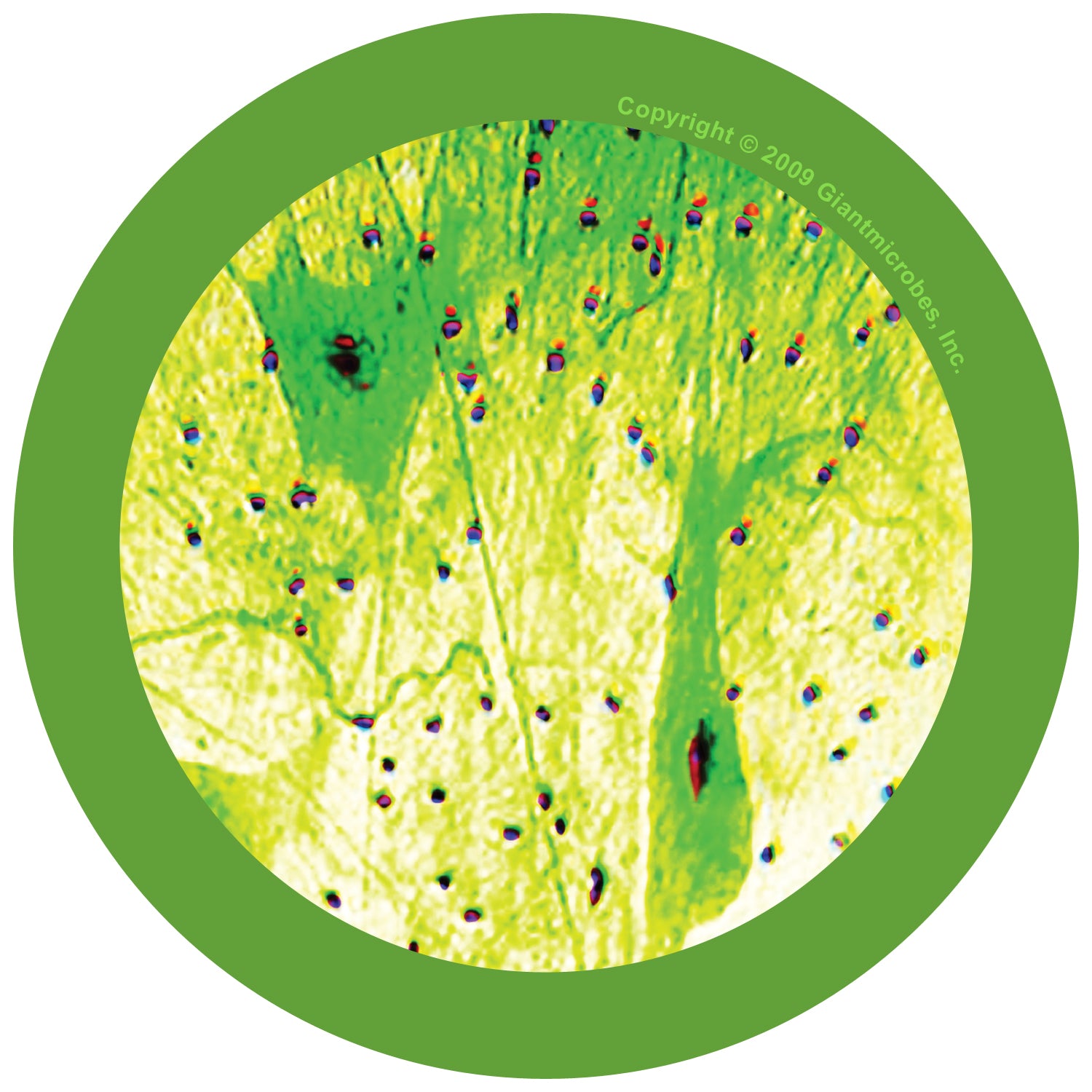Body Cells Gift Box
Body Cells Gift Box
Couldn't load pickup availability
You are made of about 30 trillion cells. More amazing: your body is also home to an estimated 40 trillion bacteria! This microbial melting pot is mostly in your gut and helps keep you healthy. So if you wonder Who Am I? Grab your Body Cells gift pack and shout "I am 70 trillion cells!"
Body Cells themed gift box includes these mini microbes: Bone Cell, Fat Cell, Nerve Cell, Hair, and Muscle Cell.
Gift Box packaging and exact contents may vary.
Bone Cell
Your bones are made primarily of an intricate edifice of mineralized tissue laid down by bone cells like a coral reef.
Mature osteocytes occupy little spaces called lacunae and reach out desperately to nearby cells with thin extensions into little channels (or canaliculi) in the bone. They form a living network inside the bone that can exchange nutrients and waste. They can also communicate about which parts of the bone are being stressed and need to be strengthened – as well as determine which parts should be left to decay.
Fat Cell
The average human body has 40 billion corpulent little cells whose primary job is to make you fat!
These portly little adipocytes (Greek for “fat cell”) are just trying to be helpful, of course. The fat they store provides warmth and protection for your body, and even transports essential vitamins such as A, D, E, and K throughout your body. Most importantly, the energy in your fat can keep you alive for months, if the need ever arises.
Nerve Cell
There are a lot of different kinds of nerve cells. Motor neurons shock our muscles into action; sensory neurons in our eyes and ears are stimulated by light and sound, on our nose and tongue by chemicals for smell and taste, and on our skin by touch; and an untold number of other interneurons transmit impulses within the central nervous system and the brain.
Hair
Hair provides natural warmth and protection from injury, both from pointy objects and from solar UV rays. Nearly all mammals are entirely covered by thick, terminal hair with some exceptions (such as elephants, rhinoceri, hippopotami, pigs, whales, walruses, us...)
Hair grows in a variety of textures and colors. But just two pigments (eumelanin and phenomelanin) produce a range of shades from blond, brown, and black, to red, grey, and white.
Muscle Cell
There are three kinds of muscle cells: cardiac (the involuntary thumping muscles found in the heart), smooth (the involuntary muscles such as those that line blood vessels, the gastro-intestinal tract, and the lungs) and skeletal (the familiar muscles attached by tendons to bones).
Muscles are typically red because they are saturated with the energy-carrying blood required to do their work. However, “white” fast-twitch muscle can produce a large force for very short periods.
